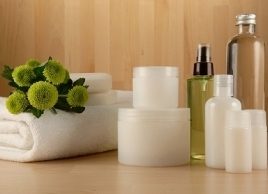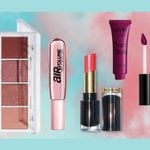Green beauty: What the labels mean
In the past few years, the number of beauty products wearing labels such as ‘organic’ or ‘natural’ or promoted as ‘green’ has skyrocketed. But what, exactly, does organic mean when it comes to a skin cream? And how is that different from one that’s natural?

Source: Best Health Magazine, September 2008
The beauty aisles have become somewhat tricky territory for the environmentally conscious beauty aficionado. Here’s how to navigate:
Organic beauty products
The word organic gets tossed around loosely when it comes to beauty products. “Consumers are confused,” admits Michelle Sparrock, executive vice-president for Belvedere International, which makes the “green” Live Clean line of products.
Currently, there is no government labelling regulation for beauty products as there is with organic foods, which are regulated by the Canadian Food Inspection Agency (CFIA). This body audits and accredits Canada’s roughly 30 certifying bodies that grant “certified organic” status to farms free of synthetic pesticides, herbicides and even agricultural sludge.
While no single organization has overall responsibility for regulating labelling on beauty products, manufacturers can opt to apply food-grade standards to products, says Carole Saindon of Health Canada. That means that if your body lotion has a “certified organic” label, 95 percent of its ingredients have come from farms accredited by one of the CFIA’s regulatory bodies. Anything that falls short of that standard may be labelled “made with organic ingredients,” but is not certified organic.
Try: Origins Organics Nourishing Face Lotion, with cocoa butter and coconut oil ($53, 30 mL); Juice Beauty Cleansing Milk, with raspberry juice as an antioxidant and grapeseed oil to nourish ($24, 180 mL).
Natural/botanical beauty products
Natural ingredients are those that are derived from the land or sea. (“Botanical” means they’re derived from plants.) Everything from algae and aloe to green tea and grapefruit are examples of the kinds of ingredients you might see on a “natural” skincare product or shampoo.
But keep in mind that the land from which natural ingredients are derived is not necessarily herbicide-, pesticide- and fertilizer-free. In other words, says Raymond Mauro, global product development manager of the skincare line Origins Organics, “all organic products are natural, but not all natural products are organic.”
And that’s not all. A “natural” or “botanical” label does not necessarily mean all ingredients in the product are sourced from land and sea, but rather that some are. “Natural” products may contain chemical ingredients including methyl- and ethylparabens, compounds that are used as preservatives in many cosmetic products, even those claiming to be natural. Parabens mimic estrogen and have become the focus of much study and debate. Until there’s a regulated protocol, and if you are concerned about ingredients, you’d be wise to check the label.
Try: Life Brand Botanicals Aromatherapy Body Wash in Ginger Citrus, a great pick-me-up ($5, 250 mL); Kiss My Face Obsessively Natural Moisture Shave in Peaches& Creme—just a little squeeze creates a creamy lather for your legs ($6, 118 mL).
Green beauty products
“Green” is an umbrella term used by the beauty industry to indicate that not only are the contents of the bottle organic or natural, but also that the product was manufactured using sustainable and renewable resources. Origins, for example, fills some of its products in a Long Island, N.Y., facility that is fuelled entirely by wind power. (There are currently guidelines, but no laws regulating the green designation.)
Furthermore, “green” connotes that the bottle itself is either made with recycled materials or is at the very least recyclable. Care by Stella McCartney, a primarily organic skincare line, is not only bottled in recyclable materials but also comes with a voluntary return and reuse program; customers can return their empty bottles for recycling or refilling.
It pays to take a close look at the container, though. Products manufactured in North America are usually stamped (typically on the bottom of the package) with a number that tells consumers the kind of recyclable material used. That number will most commonly be a “1” (for polyethylene terephthalate, or PET), or a “2” (for high-density polyethylene, or HDPE). If there is no number, there is no guarantee that the manufacturer has used recyclable materials in bottling.
Try: The Green Beaver Company Gentle Aloe Care Green Tea Facial Cream, a fragrance-free formula that soothes and protects ($13, 120 mL); Care by Stella McCartney Nourishing Night & Day Cream, which pampers and replenishes dry and very dry skin ( $97, 50 mL).
Found this article informative? Subscribe to our magazine today and receive more Best Health exclusives delivered to your door!




